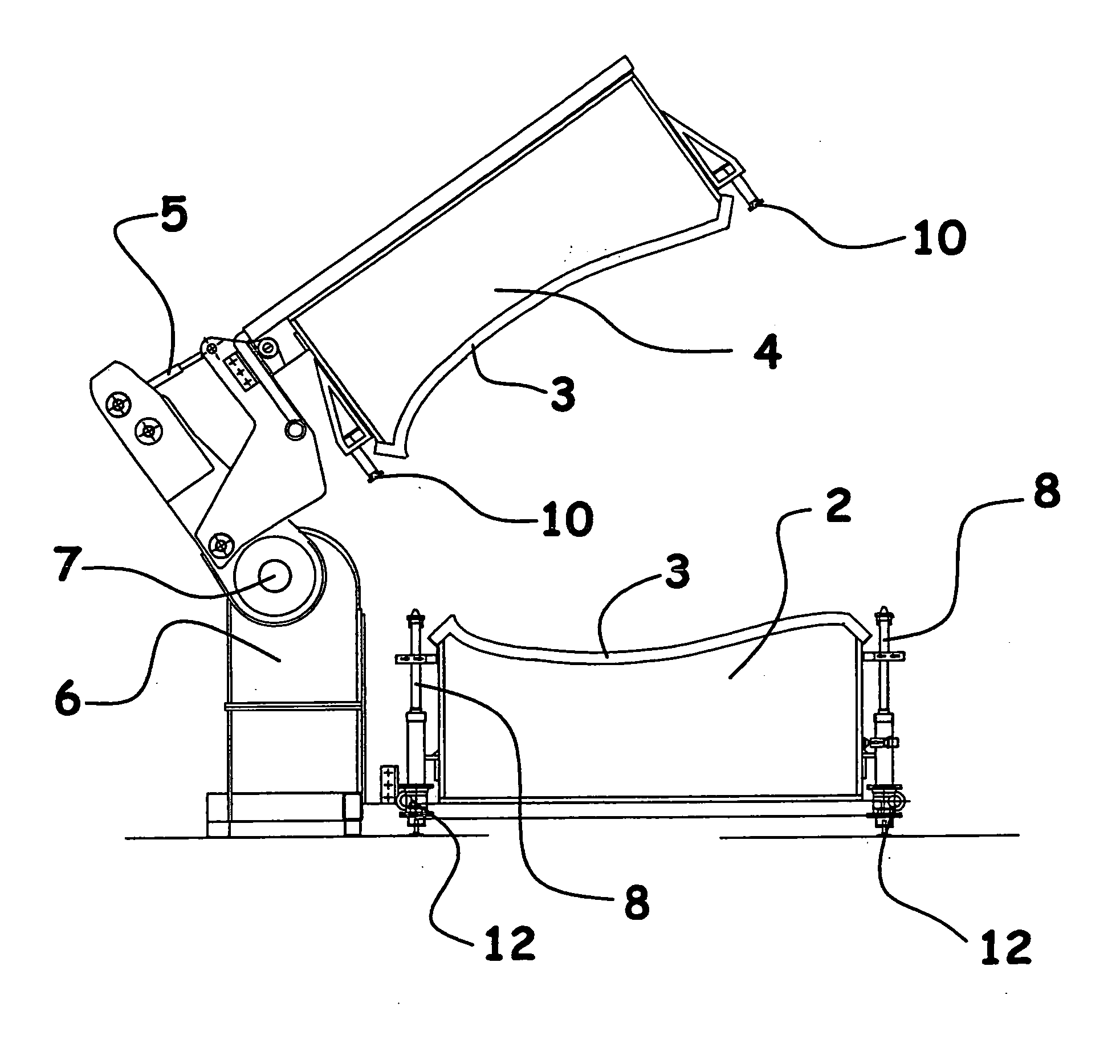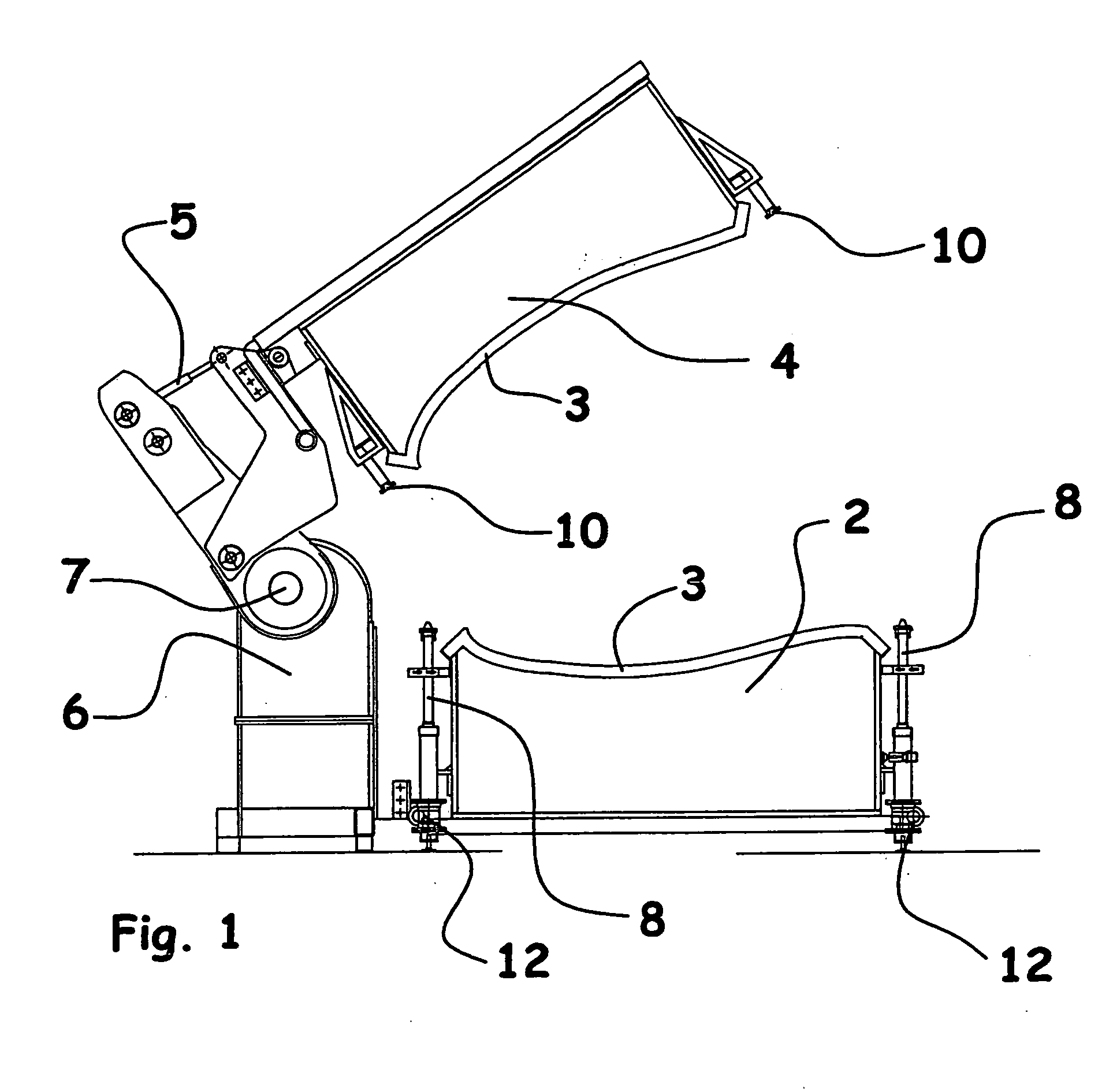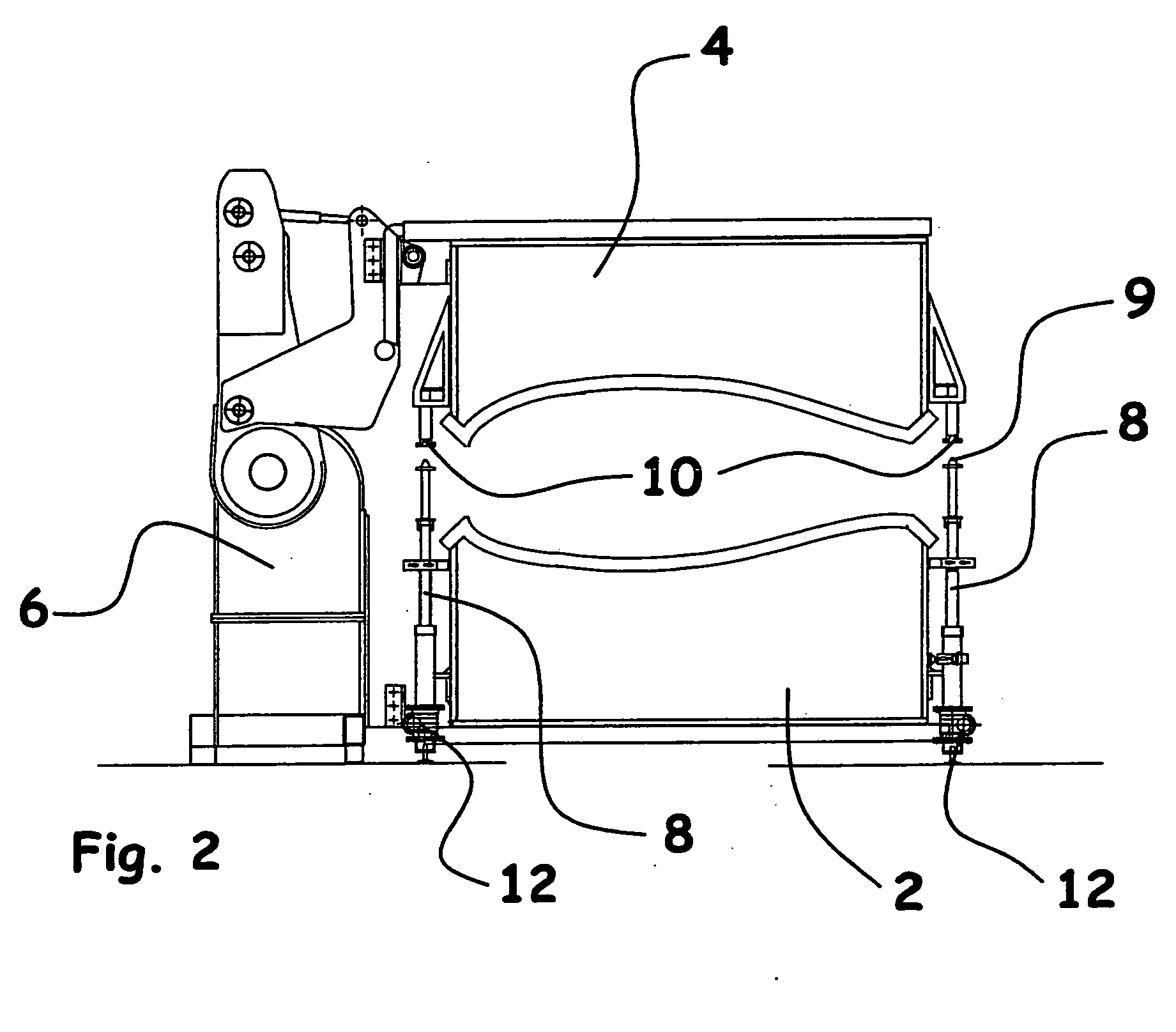Mold assembly with closure mechanism
a technology of a closure mechanism and a moulding assembly, which is applied in the field of mould assembly, can solve problems such as inaccuracy in closing, and achieve the effect of facilitating the demoulding of glued articles
- Summary
- Abstract
- Description
- Claims
- Application Information
AI Technical Summary
Benefits of technology
Problems solved by technology
Method used
Image
Examples
Embodiment Construction
[0026] The mould assembly according to the invention is particularly suitable for producing a wind turbine blade, which is made by moulding two blade shell halves in separate mould parts and subsequently gluing the blade shell halves together. The blade shell halves per se are typically made by vacuum infusion, in which evenly distributed fibres, rovings, which are fibre bundles, bands of rovings or mats, which may be felt mats of single-fibres or woven mats of fibre rovings, are layered in a mould part and covered by a vacuum bag. By creating vacuum in the cavity between the inner face of the mould part and the vacuum bag, fluid polymer may be sucked into and fill the cavity containing the fibre material. When the polymer has cured, the vacuum bag is removed, and the two blade shell halves may be glued together along the edges and by means of one or more bracings extending in the longitudinal direction of the blade between the inner faces of the two blade shell halves. The joining ...
PUM
| Property | Measurement | Unit |
|---|---|---|
| distance | aaaaa | aaaaa |
| length | aaaaa | aaaaa |
| displacement | aaaaa | aaaaa |
Abstract
Description
Claims
Application Information
 Login to View More
Login to View More - R&D
- Intellectual Property
- Life Sciences
- Materials
- Tech Scout
- Unparalleled Data Quality
- Higher Quality Content
- 60% Fewer Hallucinations
Browse by: Latest US Patents, China's latest patents, Technical Efficacy Thesaurus, Application Domain, Technology Topic, Popular Technical Reports.
© 2025 PatSnap. All rights reserved.Legal|Privacy policy|Modern Slavery Act Transparency Statement|Sitemap|About US| Contact US: help@patsnap.com



